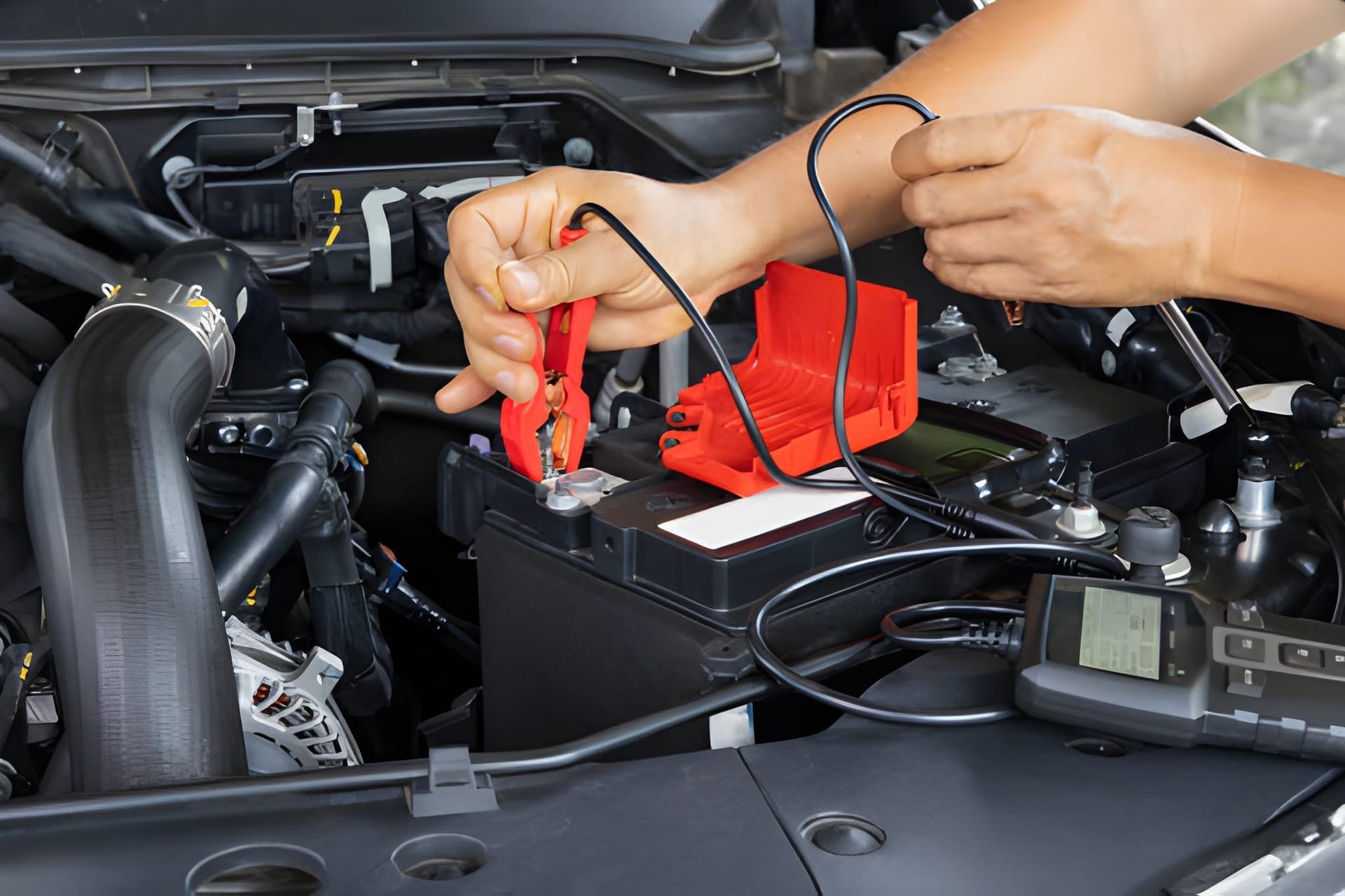Our Blog

The holidays are a time to hit the road—whether you're visiting family in Sacramento, heading to wine country, or escaping to Lake Tahoe for a snowy getaway. But if you've ever sat in bumper-to-bumper traffic on I-80 during Thanksgiving weekend, you know the Bay Area isn't the easiest place to navigate during peak travel times. So, when is the best time to travel for holiday road trips in the Bay Area? We’ve seen it all here at Dana Meyer Auto Care—from cars breaking down just before long drives to families returning with brake wear and battery issues after road trips. Let’s break it down so you can plan smarter, drive safer, and avoid the headaches. Best Days and Times to Leave Here’s what we recommend based on local traffic patterns, CHP travel advisories, and our own experience working with East Bay drivers: Leave Early in the Morning The earlier, the better, especially if you’re heading out the day before a holiday. Try to leave before 7 a.m. to get ahead of commuters and long-distance travelers. Avoid Late Afternoons the Day Before a Holiday Traffic around 3–7 p.m. on the day before Thanksgiving, Christmas Eve, or New Year’s Eve can be brutal. If you must leave during the day, aim for mid-morning or after 8 p.m. Travel on the Holiday Itself It sounds untraditional, but traffic on Thanksgiving morning or Christmas Day is usually much lighter. If you're comfortable celebrating a bit later in the day, this is often the smoothest time to drive. Best Times to Return to the Bay Area The return trip is just as important. Most breakdowns we see after the holidays happen when folks are rushing to get back on Sunday evening—often when roads are jammed and stress is high. Avoid Sunday Afternoons If you’re coming back after a weekend or extended trip, try to return early Sunday morning or Monday if you have the flexibility. Split the Trip if It’s a Long One If you're driving back from Southern California or over the Sierra, break it up. Spend a night halfway to reduce fatigue and avoid peak hours. Key Holiday Travel Dates in 2025 Thanksgiving: Busiest outbound travel: Wednesday, Nov. 26 Best travel days: Tuesday, Nov. 25, or Thursday morning, Nov. 27 Christmas: Busiest outbound travel: Tuesday, Dec. 23, and Wednesday, Dec. 24 Best travel days: Monday, Dec. 22, or Christmas Day itself New Year’s: Heaviest return traffic: Sunday, Jan. 5 Best return times: Early Friday, Jan. 3 or Monday, Jan. 6 Prep Your Car Before You Hit the Road Timing your trip right is important, but so is making sure your car is ready. Every year, we help dozens of drivers get road-trip ready. Here's a quick checklist to help you avoid preventable problems: Check Your Tires: Proper inflation and tread depth are key for safety, especially in wet conditions. Inspect Brakes: Grinding, squealing, or soft pedals? Get them checked before you travel. Test the Battery: Cold mornings and long drives can strain older batteries. Top Off Fluids: Coolant, brake fluid, washer fluid, and oil should all be at proper levels. Inspect Windshield Wipers: Visibility is everything in winter weather. We offer quick, comprehensive pre-trip inspections, so you can hit the road with confidence. Need to Travel with Kids or Pets? Here’s a bonus tip for families: if you’ve got little ones or furry friends along for the ride, plan your departure around their schedule, too. A mid-morning departure after breakfast or an early evening drive post-nap often leads to a smoother ride and fewer backseat meltdowns. And yes, we’re a pet-friendly shop, so bring your pup in while we check your ride! Make This Holiday Season Stress-Free Smart travel isn’t just about avoiding traffic. It’s about preparation, planning, and peace of mind. Whether you’re driving two hours or two days, we’re here to help make your holiday road trip safer and smoother. We recommend scheduling your check at least a week before your trip! Last-minute pre-trip checks can delay the trip or force a change of plans. Book your holiday road trip inspection today: https://www.danameyerautocare.com/
Expert brake repair services in Albany, CA by Dana Meyer Auto Care. Ensure your safety on the road. Schedule an online appointment now!
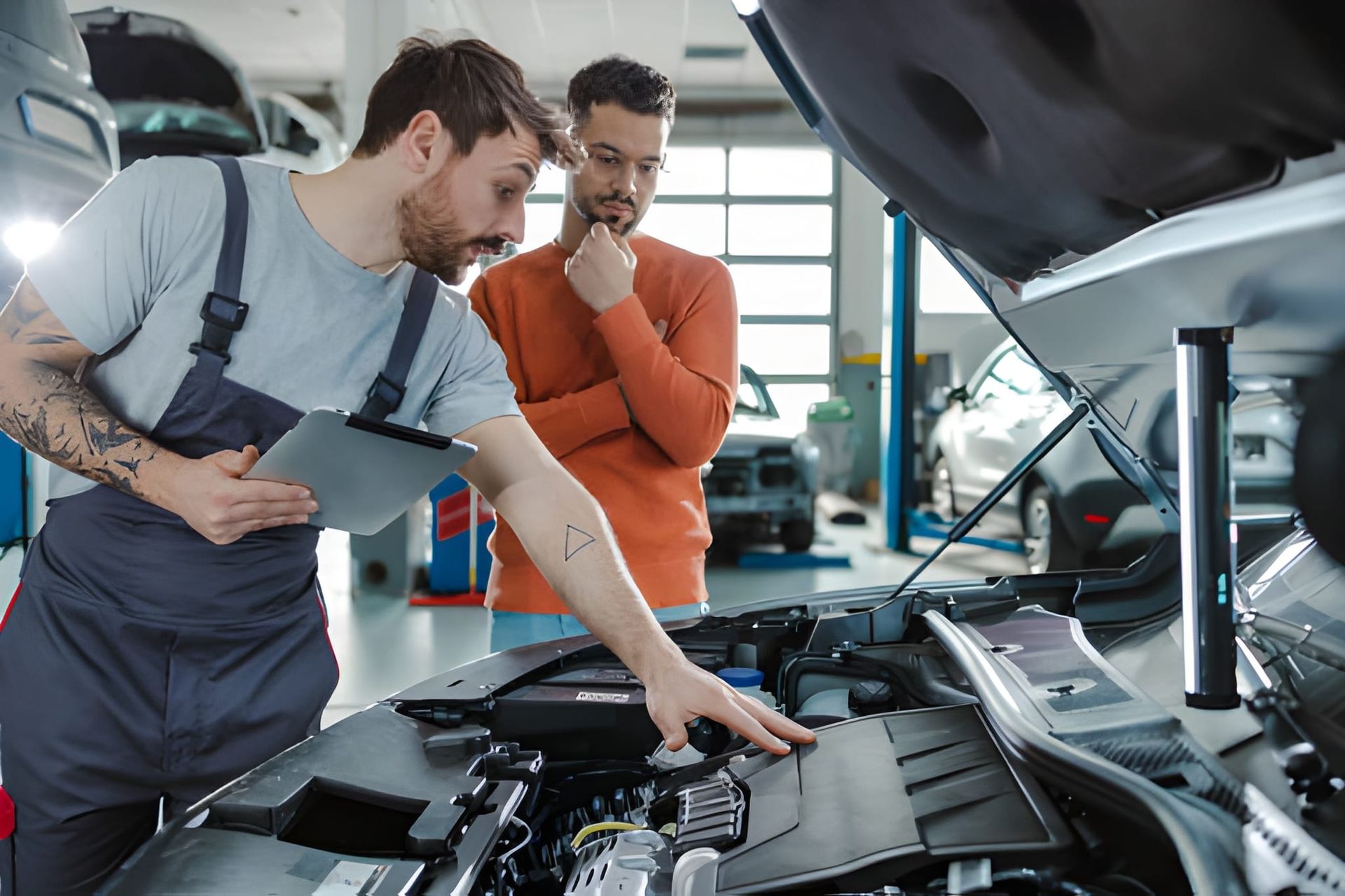
Introduction: As summer fades and the air turns crisp, drivers across Albany, Berkeley, and the greater East Bay are settling into fall routines: school runs, work commutes, and weekend drives to the coast or redwoods. But while you're breaking out jackets and holiday plans, don’t forget about your car. The seasonal shift brings cooler temperatures, shorter days, and here in the Bay Area, moisture, fog, and rain. It’s a mix that puts stress on your vehicle, especially if routine maintenance has been put off. At Dana Meyer Auto Care, we’ve served our Albany community for 50 years. We've seen how small issues like an aging battery or streaky wipers can quickly become dangerous or expensive problems when weather conditions change. So let’s walk through a comprehensive pre-winter checklist to help you stay safe, save money, and drive confidently no matter what this winter brings. 1. Don’t Let a Weak Battery Leave You Stranded As temperatures drop, your car’s battery loses cranking power. Cold mornings demand more from your battery, and if it's already aging or weakened from summer heat, it might not be up to the job. What to look for: The engine hesitates or cranks slowly when starting Corrosion on battery terminals Dim headlights or sluggish electronics Your battery is more than 3 years old Why this matters: A dead battery on a chilly morning can throw off your entire day or worse, leave you stuck in a less-than-safe location. What we do: At Dana Meyer Auto Care, we provide fast, accurate battery testing. In most cases, we can replace your battery on the spot. If your car needs a specialty battery, we’ll point you in the right direction and make sure you have the information you need, no guesswork, just honest advice. 2. Tires + Brakes: Your First Line of Defense In wet weather, stopping distance increases. That’s why healthy tires and brakes are absolutely critical before winter. What to check: Tread depth: Worn tires can’t grip wet roads effectively. Tire pressure: Cooler temps = lower pressure, which impacts control and fuel economy. Brakes: Squealing, grinding, or vibrations when stopping need immediate attention. What we recommend: We perform thorough tire inspections and brake diagnostics to ensure your car will stop safely, even on slippery roads. Bonus tip: We also inspect your alignment, essential for handling and even tire wear. 3. Check the Cooling and Heating System Yes, even in California, your car's heating and cooling systems are essential in winter. Why? The cooling system protects your engine from both overheating and freezing. The heating system keeps your cabin comfortable and your windows defogged for safe driving. Key components to inspect: Radiator and heater hoses for cracks or leaks Antifreeze level and condition Cabin air filter (affects airflow and defrosting) Climate control system performance What we do: We’ll pressure-test your system, check coolant mix, and make sure your heat and defrost functions work properly so you’re not left in the cold or driving blind. 4. Lights & Visibility: Be Seen and See Clearly With early sunsets and dense fog common in the Bay Area, visibility becomes a top safety priority. Checklist: Replace dim or burnt-out bulbs (especially headlights, brake lights, and turn signals) Restore cloudy or yellowed headlight lenses Check fog lights (and install if needed) Replace worn windshield wipers Refill the washer fluid with a freeze-resistant blend Pro tip: If your headlights aren’t lighting up the road like they used to, it might not be the bulb, it could be oxidation on the lens. We offer advanced headlight restoration that makes your lights look and perform like new. 5. Essential Fluids: Small Details, Big Impact Your car depends on more than just oil. Before winter, we recommend inspecting and topping off: Engine oil (consider changing if due soon, cold starts are harder on old oil) Brake fluid (absorbs moisture over time, which can reduce effectiveness) Transmission fluid Power steering fluid Windshield washer fluid (choose one rated for lower temps) We’ll also inspect for any slow leaks; a small drip now could become a major repair later. 6. Emergency Preparedness: Expect the Unexpected No one expects to break down, but wet roads, short daylight hours, and heavier holiday traffic increase the odds. Stock these items in your car: Jumper cables or a portable jump starter First aid kit Tire repair kit or spare tire, and a jack Blanket, flashlight, and bottled water Umbrella or rain poncho Our advice: Keep this gear accessible. And if you’re unsure whether your spare tire is in good shape (or even where it is!), we’ll check during your next visit. Why Early Maintenance Matters We get it, life gets busy. But catching issues early doesn’t just protect your car; it protects your peace of mind. Preventative care = ✔ Fewer breakdowns ✔ Lower repair costs ✔ Safer driving for you and your family ✔ Less stress during the busiest season of the year At Dana Meyer Auto Care, we’re not here to upsell; we’re here to give you reliable, honest service with clear explanations and fair pricing. Conclusion: The best way to avoid winter driving headaches is simple: take care of your vehicle before cold, wet weather hits. Whether it’s checking your brakes, upgrading your headlights, or making sure your heater is ready for foggy mornings, our ASE-certified team at Dana Meyer Auto Care has your back. We’ve served Albany, Berkeley, Richmond, and the East Bay for nearly five decades, and we’d be honored to help you stay safe and ready this season. Ready to make sure your car is winter-ready? Schedule your inspection or service with us today: Book Appointment at https://www.danameyerautocare.com/ . We look forward to helping you drive safely this winter.
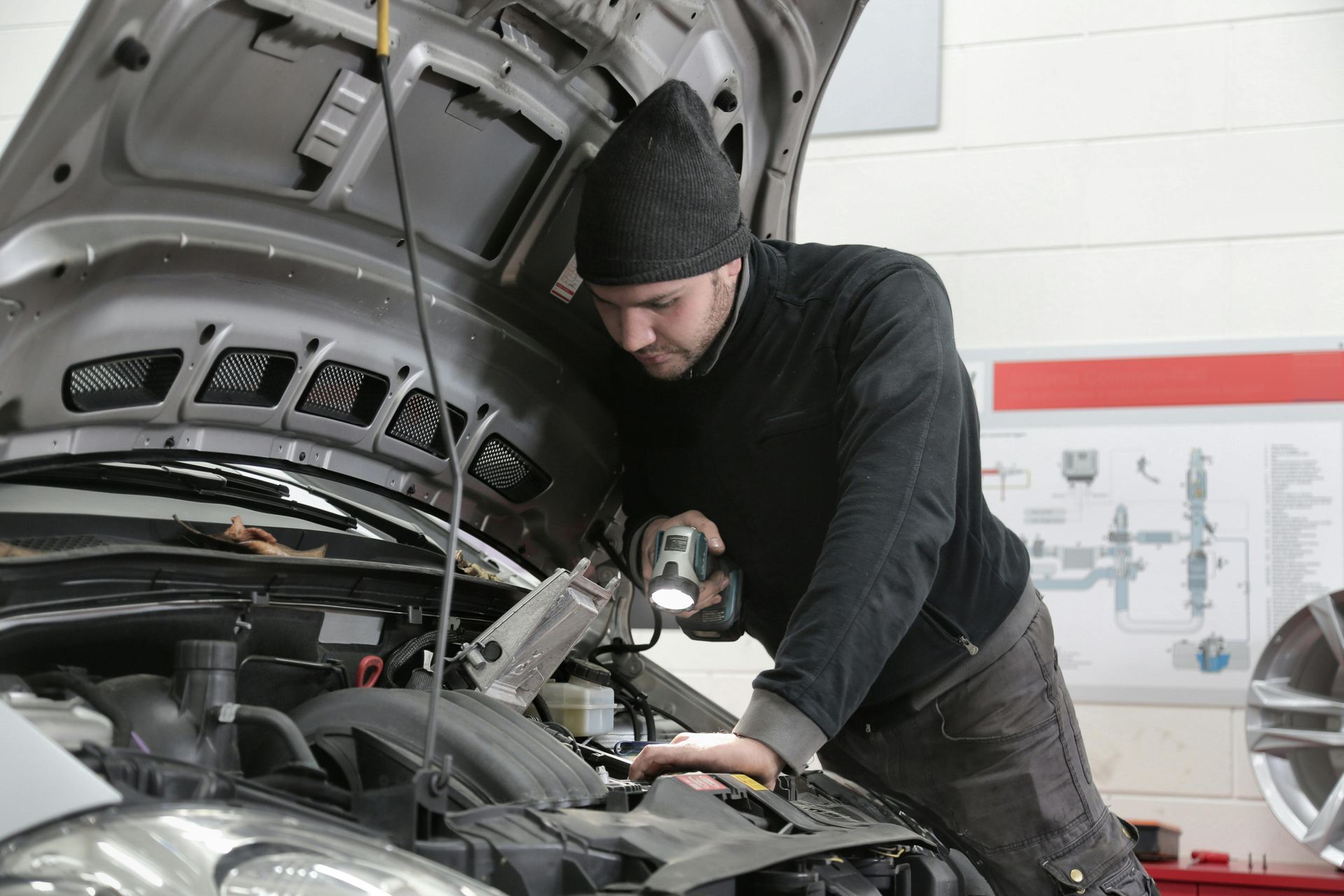
Your car represents a significant investment, often your second-largest purchase after your home. With proper maintenance, vehicles can easily last 200,000 miles or more, providing years of reliable transportation around Albany, Berkeley, and the greater Bay Area. The key is developing a consistent maintenance routine that addresses both routine service and the unique challenges of California driving. Bay Area vehicles face specific stressors that affect longevity: stop-and-go traffic, hill driving, temperature extremes, and California's dusty conditions. A well-planned maintenance strategy can help your car thrive despite these challenges, saving you thousands of dollars while ensuring reliable transportation for years to come. The True Cost of Vehicle Ownership Before diving into maintenance strategies, it's important to recognize the financial impact of proper care. The average new car costs over $40,000, while a quality used vehicle still represents a substantial investment. Maintenance vs. replacement costs: Annual maintenance: $1,200-2,000 Major repair (engine/transmission): $3,000-8,000 Vehicle replacement: $25,000-50,000 California driving factors: Bay Area vehicles often accumulate miles quickly due to long commutes. A car driven 15,000 miles annually needs more frequent service than the national average but can last just as long with proper care. Regular maintenance is always more affordable than major repairs or early replacement. Creating Your Maintenance Schedule Successful vehicle longevity starts with following a comprehensive maintenance schedule tailored to your driving conditions. Albany drivers deal with more severe conditions than many realize. Why Bay Area driving is considered "severe": Frequent short trips (under 10 miles) Stop-and-go traffic conditions Dusty, dry conditions Temperature extremes from season to season Hill driving that stresses engines and brakes Maintenance intervals for severe conditions: Oil changes: Every 3,000-5,000 miles Air filter: Every 12,000-15,000 miles Cabin filter: Every 15,000-20,000 miles Transmission service: Every 30,000-60,000 miles Coolant flush: Every 30,000-50,000 miles Engine Oil: Your Car's Lifeblood Nothing affects vehicle longevity more than regular oil changes. Clean oil lubricates moving parts, removes contaminants, and helps control engine temperature. Why oil changes matter more in California: Hot weather breaks down oil faster Dusty conditions introduce more contaminants Traffic conditions create more engine stress Extended oil change intervals can cause expensive engine damage Oil change best practices: Use oil grade recommended in your owner's manual Don't exceed manufacturer's change intervals Check oil level monthly between changes Watch for oil color changes or unusual consistency Bay Area consideration: If you frequently drive Highway 580 or I-80 in heavy traffic, consider shorter oil change intervals to protect your engine investment. Cooling System Maintenance California's hot summers and demanding driving conditions make cooling system maintenance critical for vehicle longevity. Overheating can destroy an engine in minutes. Cooling system components to maintain: Radiator and coolant Water pump Thermostat Hoses and connections Cooling fans Service recommendations: Check coolant level monthly Flush cooling system every 30,000-50,000 miles Replace worn hoses before they fail Test thermostat operation annually Local importance: Summer temperatures in Albany can exceed 90°F. Combined with traffic heat, your cooling system works overtime to protect your engine. Transmission Care for Long Vehicle Life Your transmission is one of your car's most expensive components. Proper maintenance can help it last the life of your vehicle, while neglect often leads to costly replacement. Transmission maintenance essentials: Regular fluid changes based on driving conditions Filter replacement when applicable Prompt attention to shifting problems Avoiding transmission overheating Bay Area driving impact: Stop-and-go traffic from Albany to San Francisco puts tremendous stress on automatic transmissions. Regular service is essential for longevity. Warning signs to address immediately: Delayed shifting or slipping Unusual noises during gear changes Burnt smell from transmission fluid Leaks under the vehicle Brake System Longevity Brake components wear faster in hilly terrain and heavy traffic conditions common around Albany and Berkeley. Regular brake maintenance ensures safety while maximizing component life. Brake maintenance for longevity: Regular brake inspections Brake fluid replacement every two years Prompt pad replacement before damage occurs Rotor resurfacing when appropriate Driving tips for brake longevity: Avoid riding the brakes on hills Use engine braking when possible Allow plenty of following distance Address brake problems immediately Tire Care for Maximum Mileage Proper tire maintenance significantly affects vehicle longevity by ensuring even wear, maintaining fuel efficiency, and preventing suspension damage. Tire maintenance routine: Check pressure monthly Rotate tires every 5,000-7,500 miles Maintain proper wheel alignment Replace tires before they become unsafe California considerations: UV exposure and temperature changes affect tire life. Regular rotation and proper pressure maintenance become even more important in our climate. Air Filtration Systems Clean air filters protect your engine and improve fuel efficiency, both important for vehicle longevity. California's dusty conditions make filter maintenance particularly important. Two filters to maintain: Engine air filter: Protects engine from contaminants Cabin air filter: Keeps dust and pollutants out of the passenger compartment Replacement schedule for Bay Area vehicles: Engine air filter: Every 12,000-15,000 miles Cabin air filter: Every 15,000-20,000 miles More frequent replacement during wildfire season Electrical System Maintenance Modern vehicles depend on complex electrical systems. Proper maintenance prevents expensive electronic component failures. Key electrical maintenance: Battery testing and replacement Alternator inspection Starter system checks Wiring inspection for corrosion or damage California climate effects: Heat accelerates battery failure, while temperature swings stress electrical connections. Regular testing prevents unexpected failures. Preventive vs. Reactive Maintenance The difference between vehicles that last 200,000+ miles and those that fail early often comes down to maintenance philosophy. Preventive maintenance approach: Follow scheduled service intervals Address small problems before they become big ones Use quality parts and fluids Work with experienced technicians Reactive maintenance mistakes: Waiting for obvious problems to appear Ignoring warning signs Deferring maintenance to save money Using substandard parts or service The Role of Professional Service While some maintenance tasks can be done at home, professional service ensures comprehensive care that maximizes vehicle longevity. Professional advantages: Comprehensive inspections catch developing problems Access to specialized tools and diagnostic equipment Experience with common failure patterns Warranty protection on parts and labor What professionals can detect: Early signs of component wear Fluid contamination issues Electrical system problems Safety concerns requiring immediate attention Maintenance Records: Protecting Your Investment Detailed maintenance records prove your vehicle has been properly cared for, protecting resale value and helping technicians diagnose problems. Record keeping benefits: Higher resale value Warranty claim support Better diagnostic information for technicians Evidence of proper care for insurance purposes Cost-Effective Maintenance Strategies Regular maintenance doesn't have to break your budget. Smart planning and preventive care actually save money over time. Money-saving maintenance tips: Bundle services to reduce labor costs Address problems early before they cause additional damage Use quality parts that last longer Develop a relationship with a trusted service provider Long-term financial benefits: Avoid expensive emergency repairs Maintain better fuel efficiency Extend vehicle life beyond loan payments Preserve resale value Special Considerations for Bay Area Vehicles Albany and surrounding Bay Area communities present unique challenges that affect maintenance needs: Traffic-related wear: Heavy commuting accelerates brake wear and transmission stress. Climate effects: Temperature swings and UV exposure affect rubber components and fluids. Air quality: Dust and pollutants require more frequent filter changes. Elevation changes: Hill driving stresses engines, transmissions, and brakes more than flat terrain driving. Making Maintenance a Priority Vehicle longevity requires treating maintenance as an investment rather than an expense. Regular care prevents major problems and ensures reliable transportation for years. Signs of a well-maintained vehicle: Consistent performance across all systems No unusual noises, smells, or vibrations Good fuel efficiency maintained over time Clean fluids and properly functioning components Ready to maximize your vehicle's lifespan with proper maintenance? Dana Meyer Auto Care has served Albany, Berkeley, Richmond, and surrounding Bay Area communities since 1975. Our ASE-certified technicians know exactly how local driving conditions affect vehicle longevity and can develop a maintenance plan tailored to your specific needs. We provide comprehensive maintenance services designed to keep your vehicle running reliably for 200,000 miles and beyond. From routine oil changes to complex system diagnostics, our experienced team uses quality parts and proven procedures to protect your automotive investment. Call (510) 292-4900 or visit us at 660 San Pablo Ave in Albany to develop your vehicle longevity maintenance plan today. Invest in proper care now and enjoy years of reliable transportation with our expert service and 2-year/24,000-mile warranty.
Discover essential engine diagnostics advice from Dana Meyer Auto Care in Albany, CA. Improve your vehicle's performance today! Visit us now for expert care.

Fall in California brings unique challenges for your vehicle. While we don't face harsh winter snow like other states, our dry conditions, temperature swings, and wildfire season create their own set of maintenance needs. As an Albany driver, preparing your car for fall means focusing on specific issues that affect Bay Area vehicles. Why Fall Maintenance Matters in California California's fall season might seem mild, but your car faces several stressors. The hot summer months can leave your vehicle's systems strained, and the approaching cooler weather requires different preparation than traditional winter climates. Plus, wildfire season often extends into fall, creating air quality issues that affect your car's air filtration system. Check Your Cooling System Summer heat puts tremendous stress on your car's cooling system. Even though fall temperatures are dropping, your radiator and coolant system need attention after working overtime during hot weather. What to do: Check coolant levels and look for leaks Inspect hoses for cracks or wear Test your radiator cap Flush the cooling system if it's been more than two years A failing cooling system can leave you stranded, even in mild California weather. Don't wait until you see steam coming from under the hood. Inspect Your Tires California's diverse driving conditions—from Highway 580's daily commute to weekend trips in the hills—demand reliable tires. Fall is the perfect time to assess tire health after summer road trips and heat exposure. Key tire checks: Measure tread depth using the penny test Check tire pressure monthly (cooler weather affects pressure) Look for uneven wear patterns Inspect sidewalls for cracks or bulges Remember, proper tire maintenance improves fuel economy and keeps you safe on those foggy Bay Area mornings. Test Your Battery Car batteries work harder in extreme temperatures, and after a hot California summer, yours might be ready to fail. Cool fall mornings can reveal a weak battery that struggled through the heat. Battery maintenance steps: Clean corrosion from terminals Check battery connections Test battery charge level Replace batteries over three years old A dead battery is inconvenient anywhere, but especially frustrating when you're trying to get to work in San Francisco or Oakland. Update Your Air Filter California's wildfire season often peaks in fall, making air filter maintenance crucial. A clogged air filter reduces engine efficiency and allows harmful particles into your cabin. Filter inspection points: Check engine air filter for dirt and debris Replace cabin air filter if dirty or clogged Consider upgrading to high-efficiency filters during fire season Clean filters protect your engine and keep you breathing easier during smoky conditions common in Northern California. Brake System Check With holiday travel approaching and wet weather possible later in fall, your brakes need to be in top condition. California drivers often experience brake wear from stop-and-go traffic and hill driving. Brake inspection includes: Check brake pad thickness Test brake fluid levels Listen for grinding or squealing sounds Feel for vibrations when braking Don't ignore brake warning signs. The hills around Albany and Berkeley demand reliable stopping power. Prepare for Rain Season While California doesn't get heavy snow, fall often brings the first significant rains after dry summer months. This creates slippery road conditions as oil and debris mix with water. Rain preparation: Test windshield wipers and replace if streaking Check windshield washer fluid levels Inspect headlights and taillights Ensure defrosters work properly Good visibility is essential for safe driving on wet Bay Area roads. Oil Change and Fluid Check Regular oil changes become even more important after summer driving. High temperatures can break down oil faster, and fall is an ideal time for fresh fluids. Fluid maintenance: Change engine oil and filter Check transmission fluid Inspect brake fluid color and level Top off power steering fluid Fresh fluids help your engine run smoothly and efficiently as temperatures begin to change. Schedule Professional Inspection Some maintenance tasks require professional expertise and specialized tools. A comprehensive inspection can catch problems before they become expensive repairs. Professional services include: Computer diagnostics Electrical system testing Suspension and steering inspection Exhaust system check Ready for Fall? Let Us Help Don't let fall catch your car unprepared. At Dana Meyer Auto Care in Albany, our ASE-certified technicians understand the unique challenges California drivers face. Whether you need a comprehensive fall inspection, brake service, or cooling system maintenance, we're here to keep your vehicle running reliably. Located at 660 San Pablo Ave, we've been serving Albany, Berkeley, Richmond, and surrounding Bay Area communities since 1975. Our 2-year/24,000-mile warranty gives you confidence in every repair. Schedule your fall maintenance today by calling (510) 292-4900 or booking online. Keep your car ready for whatever California's fall season brings.
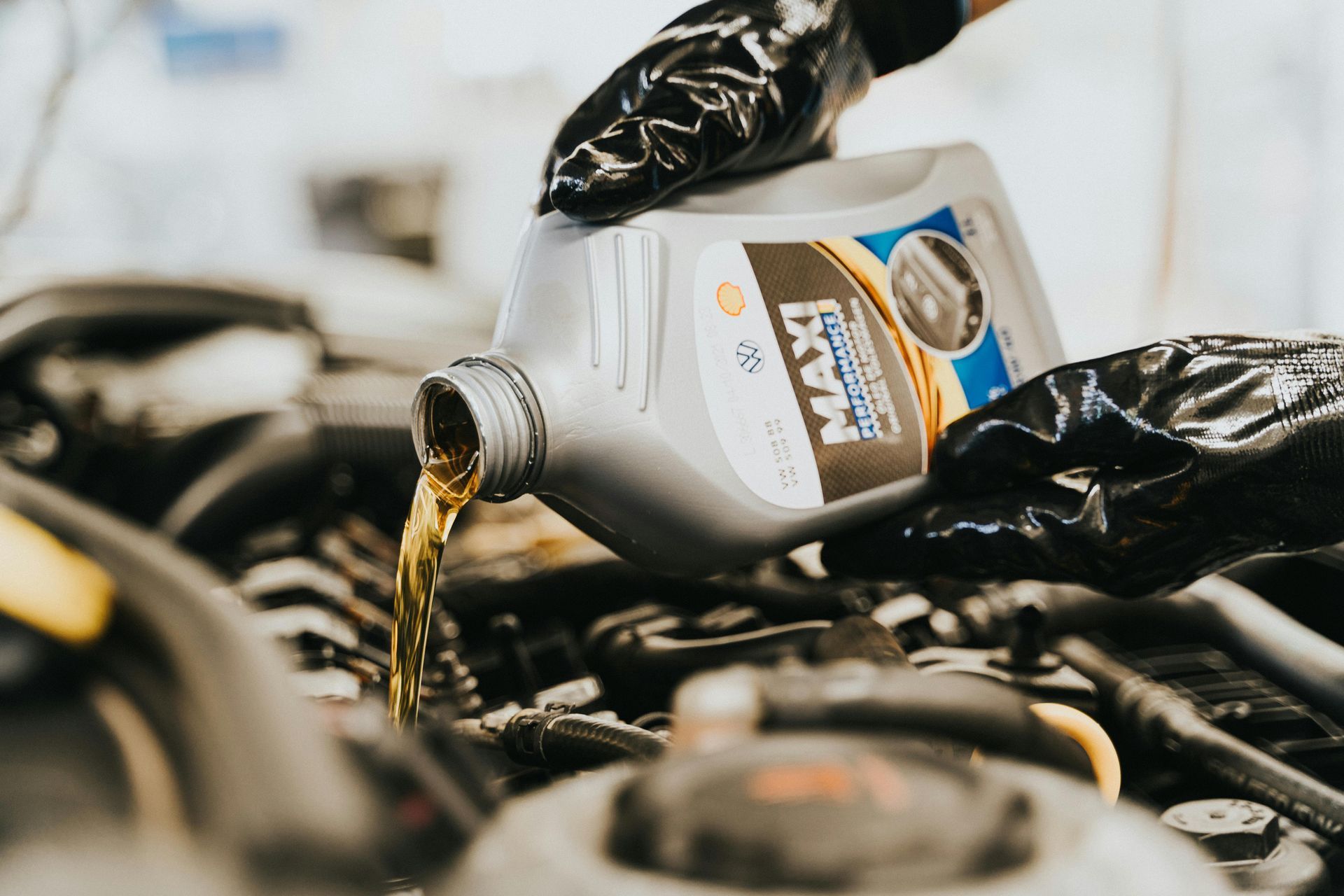
Your car depends on several vital fluids to run smoothly and safely. Think of these fluids as your vehicle's lifeblood—when they're clean and at proper levels, your car performs beautifully. When they're low or contaminated, you could face expensive repairs or dangerous breakdowns on busy Bay Area roads. As an Albany driver, you face unique challenges that make fluid maintenance even more important. Stop-and-go traffic on Highway 80, hill driving around Berkeley, and California's temperature swings all put extra stress on your vehicle's fluid systems. Why Fluid Checks Matter More in California California driving conditions are tougher on car fluids than many drivers realize. Our hot summers can cause fluids to evaporate or break down faster. Heavy traffic means more engine heat and transmission work. Even our mild winters create temperature changes that affect fluid performance. Regular fluid checks can prevent costly repairs and keep you safe on roads from Albany to San Francisco. Best of all, many of these checks are simple enough to do at home. Engine Oil: Your Car's Most Important Fluid Engine oil lubricates moving parts, reduces friction, and helps control engine temperature. Without proper oil levels and clean oil, your engine will suffer serious damage quickly. How to check engine oil: Park on level ground and turn off the engine Wait 5-10 minutes for oil to settle Pull out the dipstick, clean it, and reinsert fully Check the oil level between minimum and maximum marks Look at oil color—it should be amber to black, not milky or frothy When to change: Most modern cars need oil changes every 5,000-7,500 miles, but check your owner's manual. Heavy Bay Area traffic might require more frequent changes. Coolant: Preventing Overheating California heat makes coolant crucial for preventing engine overheating. This fluid circulates through your engine and radiator, absorbing heat and keeping temperatures safe. Checking coolant: Never check coolant when the engine is hot Look at the coolant reservoir (usually a translucent plastic tank) Fluid should be between minimum and maximum lines Coolant should be clear, not rusty or cloudy Check for leaks under your parked car Albany driving tip: Summer temperatures in the Bay Area can reach 90°F or higher. Low coolant during heat waves can leave you stranded on the Bay Bridge or Highway 580. Brake Fluid: Your Safety Depends on It Brake fluid transfers the force from your brake pedal to your wheels. This hydraulic fluid is essential for stopping safely, especially on Albany's hills and during heavy traffic. Brake fluid inspection: Locate the brake fluid reservoir (usually near the firewall) Check fluid level against minimum and maximum marks Fresh brake fluid is clear to light amber Dark, dirty fluid needs replacement Any moisture contamination requires immediate attention Warning signs: If your brake pedal feels spongy or goes to the floor, stop driving immediately and call for professional help. Transmission Fluid: Smooth Shifting Depends on It Transmission fluid lubricates gears and helps your car shift smoothly. Whether you have an automatic or manual transmission, this fluid is critical for proper operation. Checking transmission fluid: For automatics, check with engine running and transmission warm Use the transmission dipstick (usually red handle) Fluid should be bright red and smell sweet Dark, burnt-smelling fluid indicates problems Manual transmissions typically require professional checking Bay Area consideration: Stop-and-go traffic from Albany to Oakland puts extra stress on automatic transmissions, making regular fluid checks essential. Power Steering Fluid: Easy Steering Power steering fluid helps you turn the wheel with minimal effort. Without proper fluid levels, steering becomes difficult and components can fail. Power steering check: Locate the power steering reservoir (usually has a cap with steering wheel symbol) Check fluid level with engine off Fluid should be clear to light amber Foamy or dark fluid indicates problems Listen for whining sounds when turning Windshield Washer Fluid: Clear Vision Clean windshields are essential for safe driving, especially during California's wildfire season when ash and debris can quickly dirty your view. Washer fluid maintenance: Check the blue-capped reservoir Use proper windshield washer fluid, not just water Consider bug-removing formulas for summer driving Keep reservoir full, especially during fire season When to Check These Fluids Create a monthly routine for checking these vital fluids. Pick the same day each month—perhaps when you pay bills or do other regular tasks. Early morning checks work best when the car is cool and fluids have settled. Quick monthly checklist: Engine oil level and color Coolant level and condition Brake fluid level and appearance Windshield washer fluid level Power steering fluid level Signs You Need Professional Help While basic fluid checks are easy, some situations require professional attention: Any fluid leaking under your parked car Rapidly dropping fluid levels Contaminated or discolored fluids Warning lights on your dashboard Unusual noises when driving Professional Fluid Services in Albany Regular DIY checks are great, but professional service ensures your car gets the complete care it needs. Professional technicians can spot problems you might miss and perform fluid changes with the right equipment and disposal methods. At Dana Meyer Auto Care, our ASE-certified technicians provide comprehensive fluid services for Albany drivers. We check all your vehicle's fluids during every service visit and recommend changes based on your driving conditions and vehicle needs. Keep Your Car Running Smoothly Don't wait for warning lights or strange noises to check your car's fluids. Monthly inspections take just a few minutes but can save you hundreds of dollars in repairs and keep you safe on Bay Area roads. Ready for professional fluid service? Dana Meyer Auto Care has served Albany, Berkeley, Richmond, and surrounding communities since 1975. Our experienced team knows exactly what Bay Area driving does to your car's fluids. Call (510) 292-4900 or visit us at 660 San Pablo Ave in Albany to schedule your fluid service today. Keep your car's vital fluids in top condition with our expert care and 2-year/24,000-mile warranty.
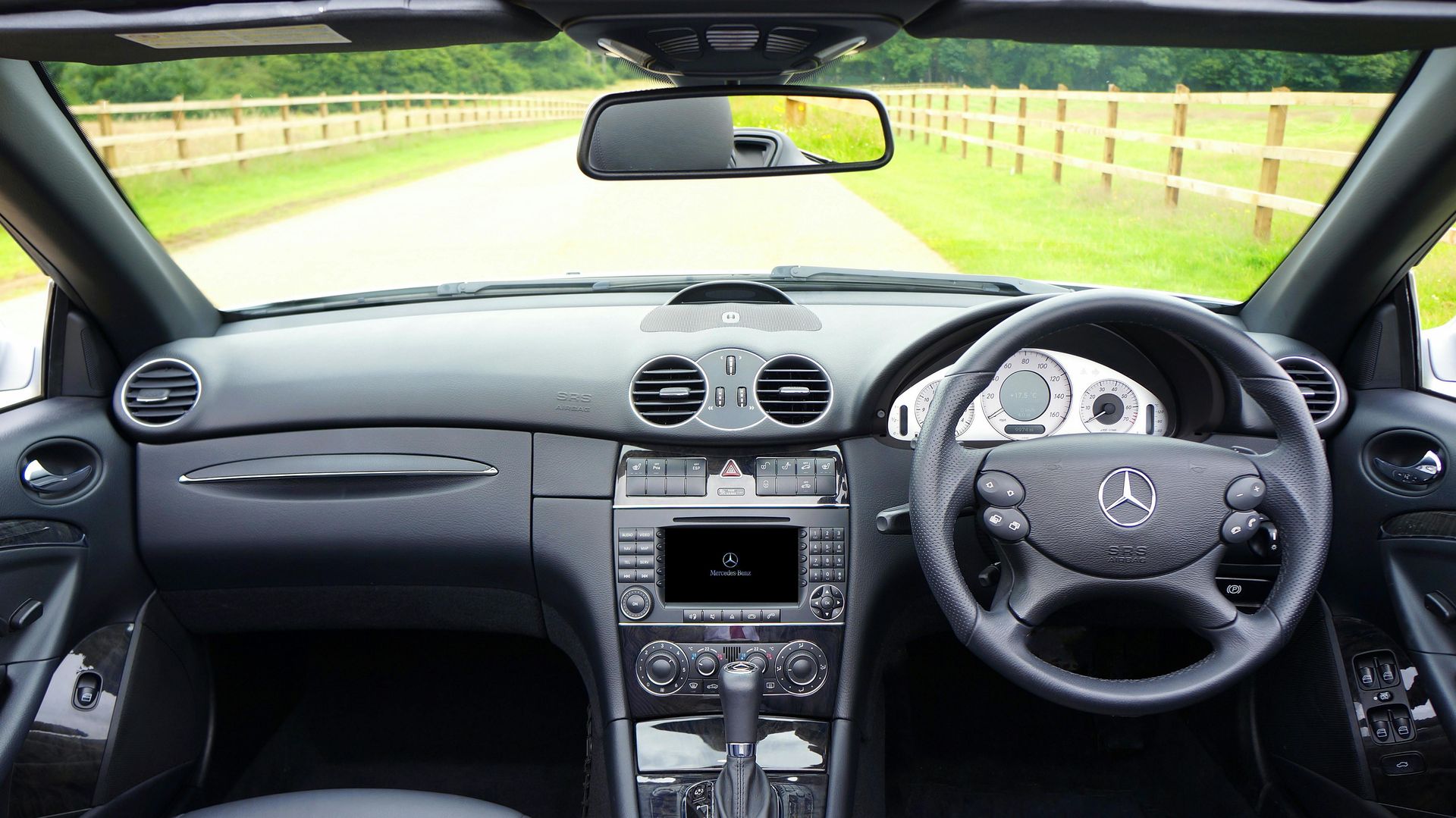
Many California drivers think heating systems aren't important since we don't face harsh winters like other states. That's a costly mistake. Your car's heating system works year-round and connects directly to your engine's cooling system. When it fails, you could face expensive engine damage, not just cold mornings. In Albany and throughout the Bay Area, we experience surprising temperature drops, especially during winter months and early morning commutes. Fog rolling in from San Francisco Bay can make mornings quite chilly, and you'll want a reliable heating system to clear your windshield and stay comfortable. Why Your Heating System Matters More Than You Think Your car's heating system does more than keep you warm. It helps regulate engine temperature by using excess heat from the engine. When this system fails, your engine could overheat, leading to thousands of dollars in repairs. The heating system also powers your defroster, which is essential for safe driving during foggy Bay Area mornings. Without proper defrosting, your visibility becomes dangerous on busy roads like Highway 580 or the Bay Bridge. Sign #1: No Heat When You Turn on the Heater This is the most obvious sign something's wrong. When you turn your heater to hot and only get cold air, several problems could be the cause. Common causes of no heat: Low coolant levels Stuck thermostat Clogged heater core Broken heater control valve Air bubbles in the cooling system What this means: Your engine's cooling system isn't working properly. This problem can quickly lead to engine overheating, especially during California's hot summer months or while stuck in Bay Area traffic. Don't ignore it: Even if you think you don't need heat in California, this problem affects your engine's ability to stay cool. Sign #2: Heater Blows Cold Air Then Hot Air If your heater works inconsistently—sometimes hot, sometimes cold—you're dealing with a serious cooling system problem that needs immediate attention. Why this happens: Low coolant creating air pockets Failing water pump Partially blocked heater core Thermostat opening and closing erratically California driving impact: Temperature swings put extra stress on your cooling system. The inconsistent heating often gets worse during stop-and-go traffic from Albany to San Francisco, where your engine works harder. The danger: This inconsistency usually means your engine temperature is also fluctuating, which can cause severe engine damage. Sign #3: Sweet Smell Inside Your Car A sweet, syrupy smell inside your car is a clear sign of coolant leaking into your heating system. This smell comes from ethylene glycol, the main ingredient in most coolants. Where the leak might be: Heater core developing cracks Loose hose connections Damaged heater control valve Corroded fittings Health concerns: Breathing coolant fumes can cause headaches and dizziness. If you smell this sweet odor, roll down your windows and get your car checked immediately. Cost considerations: A small leak now can become a major heater core replacement later. Heater core repairs often require removing your entire dashboard. Sign #4: Fogged Windows That Won't Clear Your defroster uses the heating system to clear foggy windows. If your windows stay fogged despite running the defroster, your heating system isn't working properly. Why this happens: Heater core not producing enough hot air Blend door stuck in wrong position Coolant contamination creating moisture Blocked air passages Safety issue: Fogged windows are especially dangerous during Bay Area's frequent morning fog. Poor visibility on winding roads around Berkeley hills or during heavy traffic can lead to accidents. Bay Area specific: Our marine climate creates more condensation inside cars. A working heating system is essential for maintaining clear visibility during foggy conditions. Sign #5: Engine Temperature Running Higher Than Normal Since your heating system and cooling system work together, heating problems often show up as engine temperature issues. Warning signs to watch: Temperature gauge reading higher than usual Engine running hotter in traffic Coolant levels dropping frequently Steam coming from under the hood Why it's connected: Your heater core acts like a small radiator, helping cool your engine. When it's not working, your engine has to work harder to stay cool. California climate factor: Our hot summers make this problem worse. An engine that runs slightly warm in winter might overheat completely when temperatures climb above 90°F. What Damages Heating Systems in California California's climate creates unique challenges for heating systems that many drivers don't consider: Hard water: Many areas have mineral-rich water that can clog heater cores over time. Temperature extremes: Daily temperature swings from cool mornings to hot afternoons stress system components. Stop-and-go traffic: Heavy Bay Area traffic makes engines work harder and puts extra strain on cooling systems. Air quality: Dust and pollutants can clog cabin air filters, making heating systems work harder. When to Seek Professional Help Don't wait for complete heating system failure. These warning signs indicate you need professional service: Any of the five signs mentioned above Coolant levels dropping regularly Engine temperature fluctuating Unusual noises when running the heater Moisture or condensation inside your car The Cost of Waiting Ignoring heating system problems in California can be expensive: A stuck thermostat ($150 repair) can lead to engine damage ($3,000+ repair) A small coolant leak can become a complete heater core replacement Engine overheating can warp cylinder heads or crack engine blocks Professional Heating System Service in Albany Your car's heating system needs regular maintenance and prompt repairs when problems arise. Professional technicians have the tools and experience to diagnose problems accurately and fix them before they become expensive disasters. At Dana Meyer Auto Care, we see heating system problems year-round in Bay Area vehicles. Our ASE-certified technicians know exactly how California driving conditions affect your car's heating and cooling systems. We provide comprehensive heating system service including: Complete system diagnosis Coolant system flushing Thermostat replacement Heater core repair and replacement Leak detection and repair Don't Wait for Cold Weather Your heating system protects your engine and keeps you safe year-round. Whether it's a chilly February morning in Albany or you need defrosting power during foggy conditions, a reliable heating system is essential. Experiencing any of these heating system warning signs? Dana Meyer Auto Care has served Albany, Berkeley, Richmond, and surrounding Bay Area communities since 1975. Our experienced team knows how to keep your heating system running reliably in California's unique climate. Call (510) 292-4900 or visit us at 660 San Pablo Ave in Albany to schedule your heating system inspection today. Protect your engine and stay comfortable with our expert service and 2-year/24,000-mile warranty.

Fall in the Bay Area brings cooler mornings, shorter days, and increased risk of dead car batteries. While many drivers think winter weather kills batteries, the truth is that summer heat causes the damage and fall temperature changes reveal the weakness. Don't let a dead battery leave you stranded in a parking lot at Berkeley Bowl or stuck on San Pablo Avenue during your morning commute. How Summer Heat Damages Car Batteries California's intense summer heat is actually harder on car batteries than cold weather. Months of temperatures exceeding 90°F around Albany and the East Bay have stressed your battery's internal components. Heat accelerates the chemical reactions inside batteries, causing fluid to evaporate and internal parts to corrode faster. Your battery has worked overtime during summer driving conditions: Stop-and-go traffic on Highway 580 demands frequent starts Air conditioning use puts additional electrical load on the system Hot engine bays create extreme operating temperatures Extended periods of engine-off time in hot parking lots stress the battery By September, many batteries show signs of summer damage that cool fall mornings will expose. Why Fall Reveals Battery Problems Temperature changes stress weakened batteries. While Albany doesn't experience freezing winters, even a drop from 85°F summer days to 55°F fall mornings can reveal battery weakness. Cold temperatures slow the chemical reactions that produce electrical power, making damaged batteries struggle to start engines. Fall also brings increased electrical demands: Headlights turn on earlier in shorter days Heater and defrost systems activate on cool mornings Windshield wipers work harder during October rain season Holiday travel puts extra strain on aging batteries A battery that barely functioned during summer heat often fails completely when fall demands arrive. Recognize Battery Warning Signs Your battery communicates its condition through several warning signs that become more obvious as temperatures drop: Slow Engine Cranking : If your engine turns over more slowly than usual, especially on cool mornings, your battery may be losing capacity. This symptom often appears first during overnight temperature drops around the Bay Area. Dim Headlights : Headlights that seem dimmer than normal, particularly at idle, indicate battery weakness. Test this by comparing light brightness at idle versus when revving the engine. Dashboard Warning Lights : Modern vehicles monitor battery voltage and display warning lights when problems develop. Don't ignore battery or alternator warning indicators on your dashboard. Electrical Issues : Slow power windows, weak radio reception, or flickering interior lights can signal battery problems, especially if multiple electrical systems seem sluggish. Corrosion Around Terminals : White, blue, or green buildup around battery terminals indicates acid leakage and potential battery failure. Clean terminals improve connections but don't fix underlying battery problems. Test Your Battery Before It Fails Professional battery testing reveals problems before they leave you stranded. Modern battery testers analyze your battery's ability to hold charge and deliver starting power under various conditions. Battery testing should include: Load testing under simulated starting conditions Voltage testing at rest and under load Internal resistance measurement Visual inspection of terminals and cables Alternator output verification Most auto parts stores offer free battery testing, but professional automotive service provides more comprehensive analysis and expert interpretation of results. Battery Age and Replacement Guidelines Car batteries typically last 3-5 years in California's climate, but extreme heat can shorten this lifespan significantly. Check your battery's manufacturing date (usually printed on a label or stamped into the case) to determine its age. Replace batteries that are: Over 4 years old, regardless of performance Showing any warning signs of failure Corroded or physically damaged Unable to hold charge overnight Don't wait for complete failure. Proactive replacement prevents inconvenient breakdowns during busy fall schedules. Choose the Right Battery for Bay Area Driving Not all batteries are created equal. Bay Area driving conditions require batteries that handle: Frequent short trips around Albany and Berkeley Extended idle time in traffic High electrical loads from accessories Temperature fluctuations from fog to sunshine Consider these battery types: Standard Flooded Batteries : Most economical option for basic transportation needs and older vehicles. AGM (Absorbed Glass Mat) : Better performance for vehicles with high electrical demands or start-stop technology. Enhanced Flooded Batteries : Improved durability for frequent short-trip driving common in urban areas. Your vehicle's electrical system and driving patterns determine the best battery choice. Maintain Your Battery for Longer Life Proper maintenance extends battery life and prevents unexpected failures: Keep Terminals Clean : Remove corrosion buildup monthly using baking soda and water. Apply petroleum jelly to prevent future corrosion. Check Connections : Ensure battery cables are tight and secure. Loose connections cause starting problems and premature battery failure. Avoid Deep Discharge : Don't leave lights, radio, or accessories running with the engine off. Deep discharge cycles shorten battery life significantly. Drive Regularly : Batteries need regular charging from the alternator. Cars that sit unused for weeks develop battery problems. Emergency Preparedness for Battery Failure Even well-maintained batteries can fail unexpectedly. Prepare for emergencies with: Jumper cables or portable jump starter Roadside assistance contact information Emergency phone charger Flashlight for nighttime breakdowns Know how to safely jump-start your vehicle or call for professional help rather than risking injury or vehicle damage. Professional Battery Service Benefits Professional battery service provides advantages beyond simple replacement: Proper disposal of old batteries (required by California law) Installation with correct torque specifications System testing to ensure proper charging Warranty coverage for defective batteries Expert advice on battery selection Professional installation also includes testing your alternator and charging system to prevent premature battery failure. Don't Wait for Breakdown Season Fall is the busiest time for battery-related service calls. Prevent emergency situations by addressing battery problems before they strand you in inconvenient locations around the Bay Area. Schedule battery testing now rather than waiting for that first cool morning when your car won't start. Proactive maintenance keeps you moving through fall weather changes and holiday travel season. Keep Your Battery Strong in Albany Don't let a weak battery disrupt your fall plans or leave you stranded during busy seasons. Professional battery testing and replacement ensure reliable starting power when you need it most. Dana Meyer Auto Care has been keeping Albany drivers moving since 1975. Our ASE-certified technicians provide comprehensive battery testing, professional installation, and expert advice on the right battery for your vehicle and driving needs. Located at 660 San Pablo Ave in Albany, we're convenient to Berkeley, Richmond, and Oakland. We properly dispose of old batteries and back our battery installation with reliable warranty coverage. Call us at (510) 292-4900 or book your battery test online today. Don't wait for a dead battery to ruin your day – test it before it fails you.
